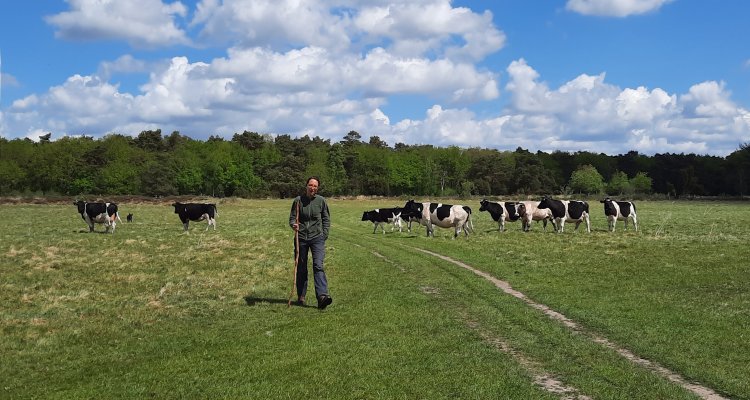
News
Verification of parentage for Jutland cattle of the ‘Stroomdal’ herd
Jutland cattle are making a more frequent appearance on heath landscape in the Netherlands. In National park Drensche Aa, you can see the animals as they accompany the shepherds and their sheep, as they complement the sheep’s grazing pattern. However, the fact that these animals are more rare than the sheep they accompany, is not common knowledge to most people. Questions about the best way to record and manage information about the animals’ genetic diversity were investigated via DNA-information by Centre for Genetic Resources, the Netherlands.
Research
Given the small population of Jutland cattle in the Netherlands (less
than 100 mature breeding females in 2021 according to records), complete and
reliable pedigree information is essential. The board of ‘Stichting
Schaapskudde Het Stroomdal’ suspected that not all the available pedigree
records were in fact correct and sometimes incomplete. Apart from verification
of the animals’ lineage, they also requested advice on how to make optimal use
of the available genetic diversity (also for the long term). The Centre for
Genetic Resources, the Netherlands (CGN), of Wageningen University &
Research (WUR) has performed several analyses for Stichting Schaapskudde Het
Stroomdal in 2021/2022. It was investigated if the available genealogical data
sufficiently matched the DNA-information. Secondly, the Dutch population of
Jutland cattle was compared to the populations of the recognised Dutch
dual-purpose cattle breeds. To find out whether or not the Jutland cattle could
be identified as a separate breed, based on its unique genetic diversity.
Verification of parentage
The results of the analyses can be used to substantiate (or not substantiate) the available pedigree records. Most of the recorded mother-offspring relations were confirmed by genotype analysis with highest kinships found. Secondly, several (half)brother-sister and cousins were confirmed. For one animal with an unknown mother, a potential mother was found. One of the interesting results showed that one of the males, registered as father for six daughters, is probably not the actual father for four of them. Unfortunately, no other potential father(s) can be identified based on the available data. Hair samples from other animals from other farmers could contribute to identifying the potential father.
Genetic diversity
The Mean Kinship of the genotyped animals varied, from lower kinships between the older animals to higher Mean Kinships between the younger generations. The results in the report show the Mean Kinships for the animals of the Stroomdal herd, which means that they will probably be different if they are calculated for the entire population. Here as well, hair samples from other herds could contribute to a more complete picture. The Mean Kinships are a valuable method for the limitation of inbreeding because the ‘self-repairing’ ability following the use of the same breeding animals makes it the most sustainable system in the long run. However, for this system a very reliable animal registration is essential, especially from all the breeding animals in the entire population.
Jutland cattle as a breed
Jutland cattle can be identified as a distinctive ‘population’ compared to the recognised Dutch (dual-purpose) cattle breeds. The Jutland population showed most similarities with the Dutch Friesian black-and-white population. However, by far not enough to state the Jutland cattle breed to be the same as Dutch Friesian. And finally, the results showed the ability to identify the animals of the Jutland breed to be similar enough to be stated as an unique population. Both findings suggest that the Jutland cattle in this dataset can be distinguished as a separate population from the recognised Dutch dual-purpose cattle breeds.
Long-term advice
The results of the performed analyses do not make the Jutland cattle a viable breed based on the current situation of the small breeding population and no strategic exchange of breeding animals. With approximately 100 registered breeding animals in the Netherlands, it will be a challenge to maintain a healthy population in the long term. The urgent advice is to set up a combined breeding programme with all Jutland owners in the Netherlands. To make arrangements about exchange of breeding animals and ways to limit the amount of inbreeding for the entire breed. The CGN is happy to contribute ideas and provide support and advice (for the short and long run) to reach these objectives.